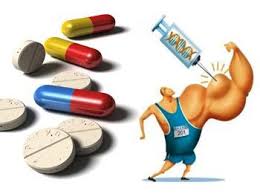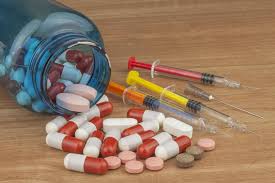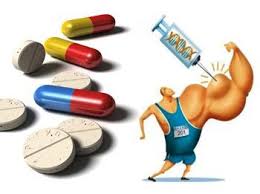
Detection time
Time of detection or time of detection indicates how long a substance is tracked in the body during special studies. is determined by the time it takes the body to eliminate all of its metabolites.
Anabolic steroids, which are lipophilic substances, are eliminated slowly and tend to remain in the body also through inactive metabolites for long periods, so anti-doping tests can reveal the use of these substances even long after the last use. Anabolic steroids have very different metabolisms and therefore the time required for elimination can also vary significantly.
Substance5-6 weeksTestosterone in suspension3 days
| Detection time | |
|---|---|
| Nandrolone decanoate, undecylenate | 15-18 months |
| nandrolone phenylpropionate | 12 months |
| Boldenone undecylenate | 4-5 months |
| Trembolone Acetate, Enanthate | 4-5 months |
| Testosterone Undecanoate Injection | 4 months |
| Testosterone Cypionate, Enanthate | 3 months |
| Queenbolone | 2-3 months |
| Oxymetholone, fluoxymesterone | 2 months |
| Injectable stanozolol | 9 weeks |
| Norethandrolone, Mesterolone, Methandienone | |
| Metantolone enanthate | 4-5 weeks |
| Oxandrolone, oral stanozolol, methenolone acetate, drostanolone | 3 weeks |
| Testosterone Propionate | 2 weeks |
| Oral Testosterone Undecanoate | 1 week |
Affinity for the androgen receptor
Anabolic steroids bind to the androgen receptor with varying affinities. Comparative studies (Saartok) were conducted on the ability of each steroid to bind the androgen receptor, these studies wanted to explain the different activity of different compounds, in fact, theoretically, the more the ability to bind, the more activity. The results of these in vitro studies show the relative affinity of various anabolic steroids to that of the superactive methyltrienolone (a steroid similar to trenbolone, but with a 17α-alkylated substituent) for androgen receptors in the cytosol. rat skeleton, prostate and rabbit skeletal muscle. Methyltrienolone is considered a reference value because it binds the receptor very strongly. These studies were aimed at testing how other steroids could displace this compound from the receptor binding site.

The order of relative affinity compared to methyltrienolone, which certainly had the strongest affinity, was as follows: nandrolone> methenolone> testosterone> mesterolone; this group had a high affinity and was generally similar in tissue. The relative relationship with fluoxymesterone, methandienone estanazolol was much weaker, and with oxymetholone and ethylestrenol – even too low to be determined.
Time of detection or time of detection indicates how long a substance is tracked in the body during special studies. is determined by the time it takes the body to eliminate all of its metabolites.
Anabolic steroids, which are lipophilic substances, are eliminated slowly and tend to remain in the body also through inactive metabolites for long periods, so anti-doping tests can reveal the use of these substances even long after the last use. Anabolic steroids have very different metabolism and therefore the time required for elimination can also vary considerably..
Substance 5-6 weeksTestosterone in suspension 3 days
| Detection time | |
|---|---|
| Nandrolone decanoate, undecylenate | 15-18 months |
| nandrolone phenylpropionate | 12 months |
| Boldenone undecylenate | 4-5 months |
| Trembolone Acetate, Enanthate | 4-5 months |
| Testosterone Undecanoate Injection | 4 months |
| Testosterone Cypionate, Enanthate | 3 months |
| Queenbolone | 2-3 months |
| Oxymetholone https://steroidsbuyonline.com/store/oral-steroids/oxymetholone/, fluoxymesterone | 2 months |
| Injectable stanozolol | 9 weeks |
| Norethandrolone, mesterolone, methandienone | |
| Metantolone enanthate | 4-5 weeks |
| Oxandrolone, Oral Stanozolol, Methenolone Acetate, Drostanolone | 3 weeks |
| Testosterone Propionate | 2 weeks |
| Oral Testosterone Undecanoate | 1 week |
Affinity for the androgen receptor
Anabolic steroids bind to the androgen receptor with varying affinities. Comparative studies (Saartok) were conducted on the ability of each steroid to bind the androgen receptor, these studies wanted to explain the different activities of different compounds, in fact theoretically, the more the ability to bind, the more activity… The results of these in vitro studies show the relative affinity of various anabolic steroids to that of the superactive methyltrienolone (a steroid similar to trenbolone, but with a 17α-alkylated substituent) for androgen receptors in the cytosol. rat skeleton, prostate and rabbit skeletal muscle. Methyltrienolone is considered a reference value because it binds the receptor very strongly. These studies were aimed at testing how other steroids could displace this compound from the receptor binding site.

The order of relative affinity compared to methyltrienolone, which certainly had the strongest affinity, was as follows: nandrolone> methenolone> testosterone> mesterolone; this group had a high affinity and was generally similar in tissue. The relative relationship with fluoxymesterone, methandienone estanazolol was much weaker, and with oxymetholone and ethylestrenol – even too low to be determined.
In light of these results, there was a large discrepancy regarding in vivo activity. of these steroids compared with their in vitro activity, even taking into account the possible differences due to the bioavailability of this historiosis, considering also the affinity of the sex hormone binding globulin in the bloodstream, this discrepancy is not justified. For example, oxymetholone and stanozolol have a low relative binding affinity compared to 17α-methyltestosterone in an in vitro study, but conversely, these steroids have relatively high myotrophic activity compared to the same steroid.In addition, other studies (Feldkoren) found that stanozolol and methandienone have significantly lower affinity of association than testosterone, but all three glisteroids were potent androgen receptor activators. Therefore, the degree of physical association with the androgen receptor as measured by these assays does not fully explain the biological activity of anabolic steroids…. It is possible that there is a different gene expression profile obtained by activation of the receptor by structurally different steroids, this event may somehow explain these discrepancies between in vivo and in vitro action. This hypothesis is supported by some research (Holterhus). In these studies, we evaluate the effects of three anabolic deglisteroids (nandrolone, oxandrolone and stanozolol), along with three virilizing androgens (testosterone, DHT, and methyltrienolone) and two testosterone precursors (DHEA and androstenedione). In a particular model in which all steroids have been shown to be potent androgen receptor activators, anabolic steroids and testosterone precursors have been shown to promote the activation of gene profiles other than androgens. It is assumed that the specific conformation induced by the ligand determines how the receptor-steroid complex can interact with various co-regulators and gene transcription factors, leading to different responses. This event may explain the above inconsistency.

In the light of these data, it is obvious that current knowledge about biomolecular components regulated by androgens is still partial, the development of this knowledge may lead to the fact that the effect of these substances may differ depending on the tissue and the type of bond created by the steroid. All this evidence suggests that there are indeed different actions between different steroids, even if structurally they all belong to the same class of substances.

In the light of these data, it is obvious that current knowledge about biomolecular components regulated by androgens is still partial, the development of this knowledge may lead to the fact that the effect of these substances may differ depending on the tissue and the type of bond created by the steroid. All this evidence suggests that there are indeed different actions between different steroids, even if structurally they all belong to the same class of substances.
